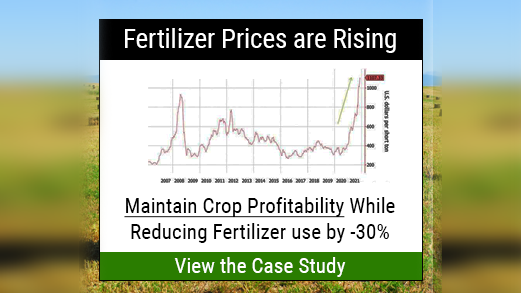Increase Your Farmers Market Sales In A SNAP
The federal Supplemental Nutrition Assistance Program — SNAP — could be an untapped marketing opportunity for your produce. SNAP, or as it was formerly known, the food stamp program, helps get more fresh produce into the diets of consumers who may not have access to the fruits and vegetables their families need. By participating in the program, growers who sell at farmers markets, or even through their own retail markets, not only get access to this large segment of consumers, but also may be able to take advantage of incentive programs that can double your sales to SNAP recipients.
How SNAP Works
Food stamp benefits have, of course, long been available to consumers through their local supermarkets. Over the last several years, however, the SNAP program has expanded to allow consumers to use their monthly benefit to purchase fruits and vegetables at farmers markets. And increasingly, other retail operations are accepting SNAP.
“There’s some confusion out there about what types of retailers can accept SNAP benefits. It’s not just supermarkets — individual farmers can accept these benefits,” says Amanda Shreve, Manager of Programs and Partnerships with the Michigan Farmers Market Association.
Community farmers markets still make up the majority of produce marketers outside of the supermarket chains that are taking part in the SNAP program. Most markets have a central location where consumers can swipe their SNAP Electronic Benefits Transfer (EBT) card and receive tokens to spend with vendors in the market for SNAP-approved items, typically fresh fruits and vegetables. The individual grower vendors can then exchange the tokens they collect for reimbursement by the farmers market.
The process is just as simple for individual growers who operate their own direct farm markets and are approved to accept SNAP benefits.
“When SNAP used a paper coupon, the redemption rate at farmers markets nationwide was fairly high. Once the transition was made from the paper coupons to the EBT, redemption rates dropped because farmers markets didn’t have the ability to readily utilize the needed equipment. Advances in technology are helping farmers’ markets make a comeback in the amount of SNAP benefits redeemed at farmers’ markets,” says Christie Welch, Farmers’ Markets Specialist with The Ohio State University South Centers.
And there’s still room for a lot of improvement.
Ohio, which ranks 33rd in the country in SNAP benefits redeemed at farmers markets, saw a 9% increase in SNAP purchases at farmers markets from 2011 to 2012.
That’s not bad, but there’s potential for a lot more. Of the $2 billion in SNAP benefits redeemed in Ohio annually, just $224,000 was used at farmers markets in 2013.
Incentives Can Increase Your Sales
Why the big disconnect? Welch says that when a market begins accepting SNAP benefits, there are some barriers to overcome in getting recipients to buy produce somewhere other than a supermarket.
The biggest may be the perception that produce is more expensive at a farmers market or farm market, meaning less bang for the consumer’s buck.
“There has been some research that shows that’s really not the case,” she says. “One of the things that has helped markets get over this perception is the incentive.”
Indeed, a facet of SNAP with the potential to benefit both consumers and growers is the ability to offer a matching program that, in some cases, can double the amount of benefits SNAP recipients are allowed to spend on fresh produce in farmers markets.
By working through foundations or other organizations that fund these incentive programs, farmers markets can help consumers buy more of the fresh fruits and vegetables they need, and in turn, increase produce sales.
“This is a win-win-win,” Welch says. “The consumer wins, the market wins, and the grower wins.”
Incentives vary from market to market depending on how the funding program is set up. Many increase benefits by a dollar or two, and some may offer as much as a dollar-for-dollar match, meaning a person with a $10 SNAP benefit can get as much as $20 of produce at the market.
“That incentivizes the consumer to come to the market in the first place. Hopefully, once they get there they will realize the food is affordable and fresh and locally produced,” Welch says. “The long-term goal, of course, is to get consumers of all kinds to eat more fresh fruits and vegetables.”
It’s important to note that the matching incentives are not federal food assistance benefit dollars. Each market must go out and obtain outside funding to help support these programs. In addition, the funding program often sets logistical guidelines that markets must follow to participate in the incentives. For example, the money can be used only for local fresh fruits and vegetables, or might only be available to markets in food deserts – areas like inner city neighborhoods where fresh produce is not readily available.
Help With Incentives
The need to seek out and apply for funding and the additional requirements to use it sometimes makes the process a bit daunting for the typical fruit grower with his or her own market, so the great majority of those using matching incentive programs are farmers markets.
There is help available through a number of organizations, however.
The Michigan Farmers Market Association, for example, partners with the Fair Food Network, which implements the Double Up Food Bucks SNAP incentive program across the state of Michigan. Shreve says through the work of Fair Food Network, Michigan is the only state with a statewide universal incentive program.
“Fair Food Network and Wholesome Wave are two national non-profits doing much of the work centered around SNAP-based incentive programs at farmers markets,” she says.
Fair Food Network works primarily in Michigan but is adding programs around the country. Wholesome Wave has programs in a number of states with many different partners.
These programs are having an impact. Shreve says Michigan has more than 300 farmers markets. Of those, 144 accept SNAP, and about 100 of those farmers markets participate in Double Up Food Bucks. The desire is there to get more markets involved.
“There’s interest in growing the program, but some of that is dependent on the capacity of the program to expand,” Shreve says. “Fair Food Network is very interested in the funding that may be available in the new Farm Bill through the Food Insecurity Nutrition Incentive (FINI) grants program.”
Details remain to be worked out on FINI, but it appears it will be implemented through federal grants that organizations or markets can apply for. But, it may be a few months or longer before details are finalized.
“That’s a wait and see for us at this point,” Welch says.
Opportunities And Advice
There are a few things to consider if you’re thinking about applying to participate in the SNAP program with your farmers market or farm market. For one, there’s the cost of the necessary equipment to accept EBT cards. Some farmers markets also charge a small administrative fee to help manage the program for the market. And in market locations that aren’t wired, you may need to arrange for wireless terminals, which also could have a monthly fee.
There are a number of programs that can help qualifying farmers markets or direct farm marketing growers offset the costs of the equipment and even the cost and materials for setting up a wireless terminal.
“The Point of Sale device is often the key piece of equipment needed to make this process work,” Shreve says. “There is federal funding available through a group called MarketLink to equip growers with wireless POS devices if they’re selling at locations that don’t have access to a phone or electricity and need a wireless device. If you’re eligible for these funds you can get the equipment at no cost.”
Even in situations where you’re not paying money to get involved with SNAP, there are other costs in terms of time and resources. And like many government programs, things can sometimes get a little confusing. The SNAP application, for example, can be a little challenging for some growers, Shreve says.
“At this time, the application is still geared toward the more traditional SNAP retailers, like the grocery stores. There can be some questions on there that may be difficult to answer, but there are people at USDA and here at the Michigan Farmers Market Association that are very willing to help farmers with those questions,” she says.
The best way to understand the potential pitfalls — and the benefits — is to ask questions in advance.
“Talk to other markets that are accepting SNAP benefits so you can understand what’s involved,” Welch says. “There are costs associated with it and most farmers markets have very small budgets.”
Shreve agrees.
“My advice to growers interested in accepting SNAP would be to reach out to organizations who are working on these programs in their state or their area for support,” she says.
One other tip from Shreve: Be patient but persistent. Although it typically doesn’t take that long, USDA reserves up to 45 days to review an application.
“Realize that USDA’s Food Nutrition Service receives applications from a lot of retailers, and in the spring they’re receiving applications from a lot of farmers markets. It takes time to review all of those, so be patient,” Shreve says. “Be timely in following up with any requests for additional information. And be persistent — if you haven’t heard anything in a while, don’t hesitate to follow up with them.”
That effort can pay off — once you apply and are approved, you are authorized to accept SNAP for the life of your business. That can open up an entirely new and beneficial market, for your produce and for your customers.
Resources
If you’re interested in getting your farmers market or farm market involved in the Supplemental Nutrition Assistance Program, here are some resources you can review.
- The USDA Food and Nutrition Service has a website that explains the SNAP program and accepts online applications to participate.
- MarketLink provides qualified farmers markets the ability to accept SNAP benefits wirelessly through an iPhone at no cost.
- The Farmers Market Coalition is a national organization that has some great resources in general, and SNAP specifically.
- Ohio State University’s Christie Welch has a good presentation on accepting EBT in your famers market.
- Wholesome Wave and Fair Food Network are national non-profits working with EBT-related incentive programs for farmers markets.
- The Michigan Farmers Market Association offers printed reference materials on accepting SNAP at farmers markets as well as a link to recorded training webinars.










